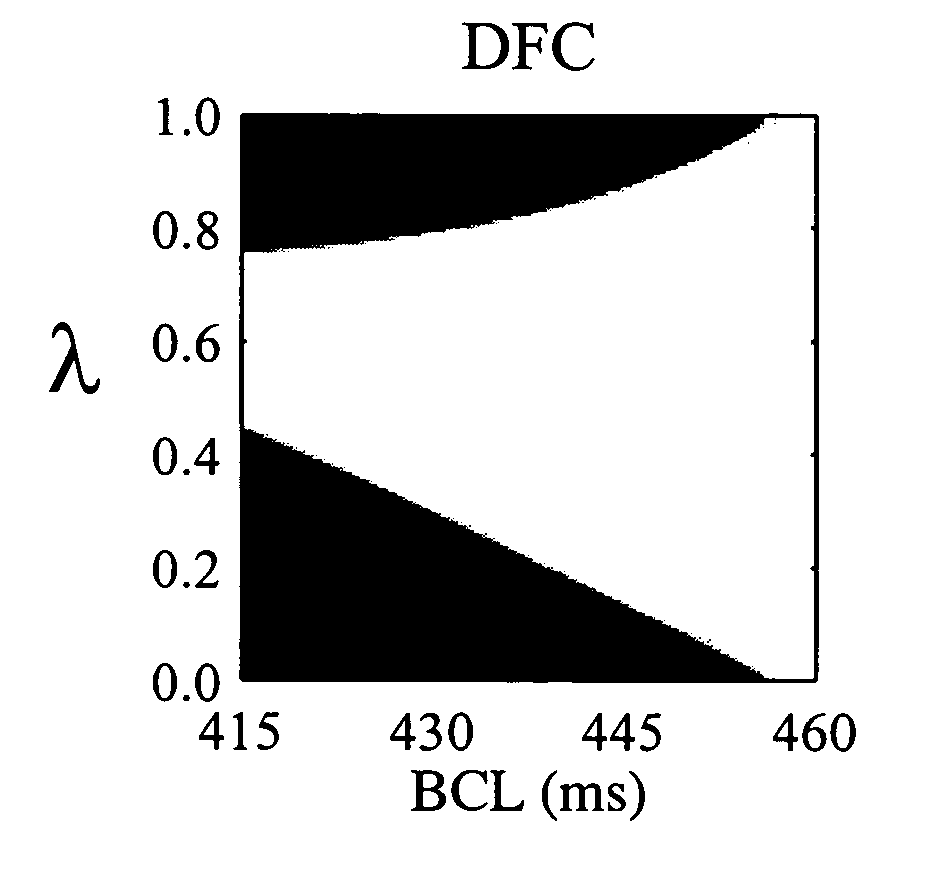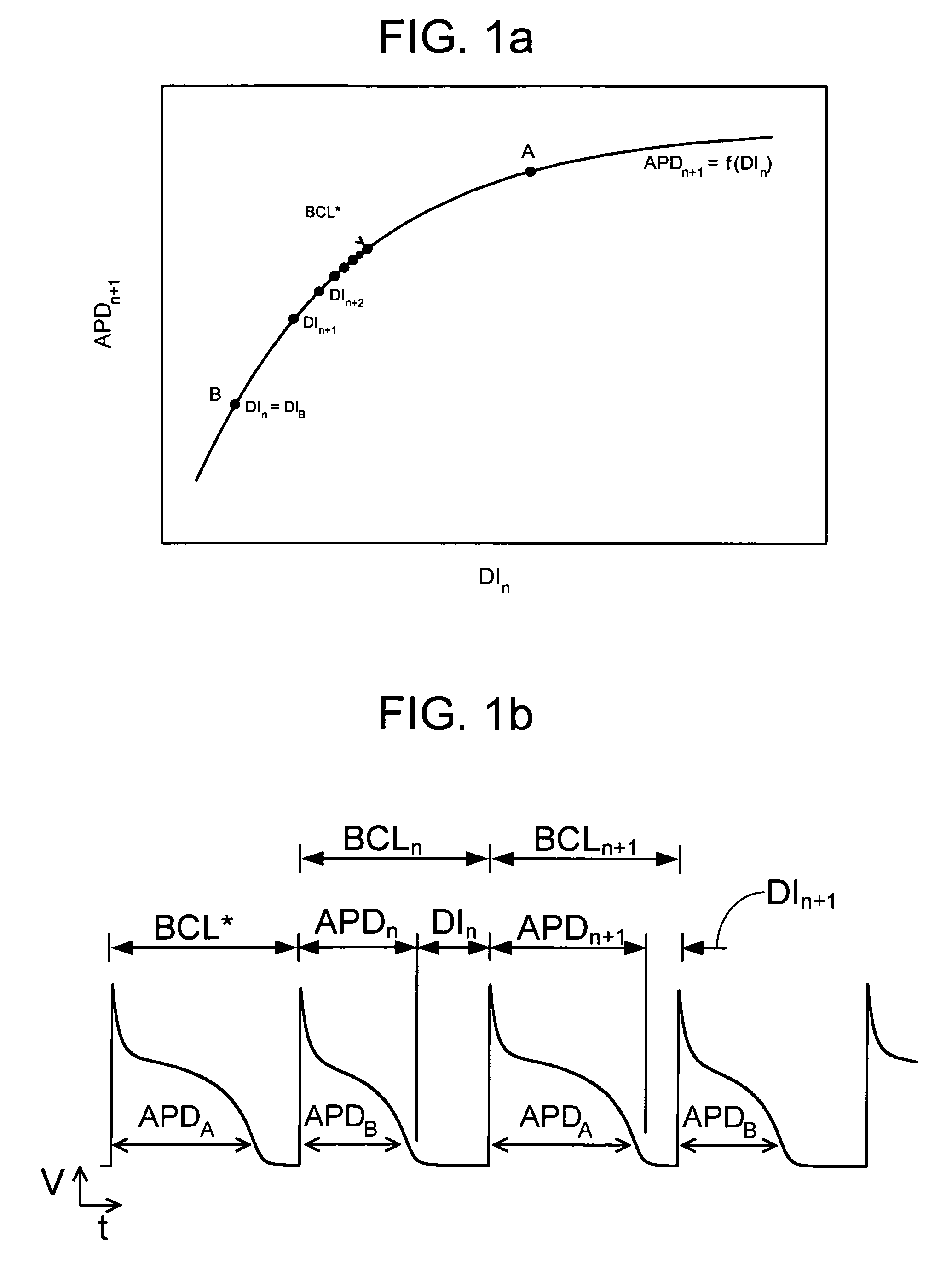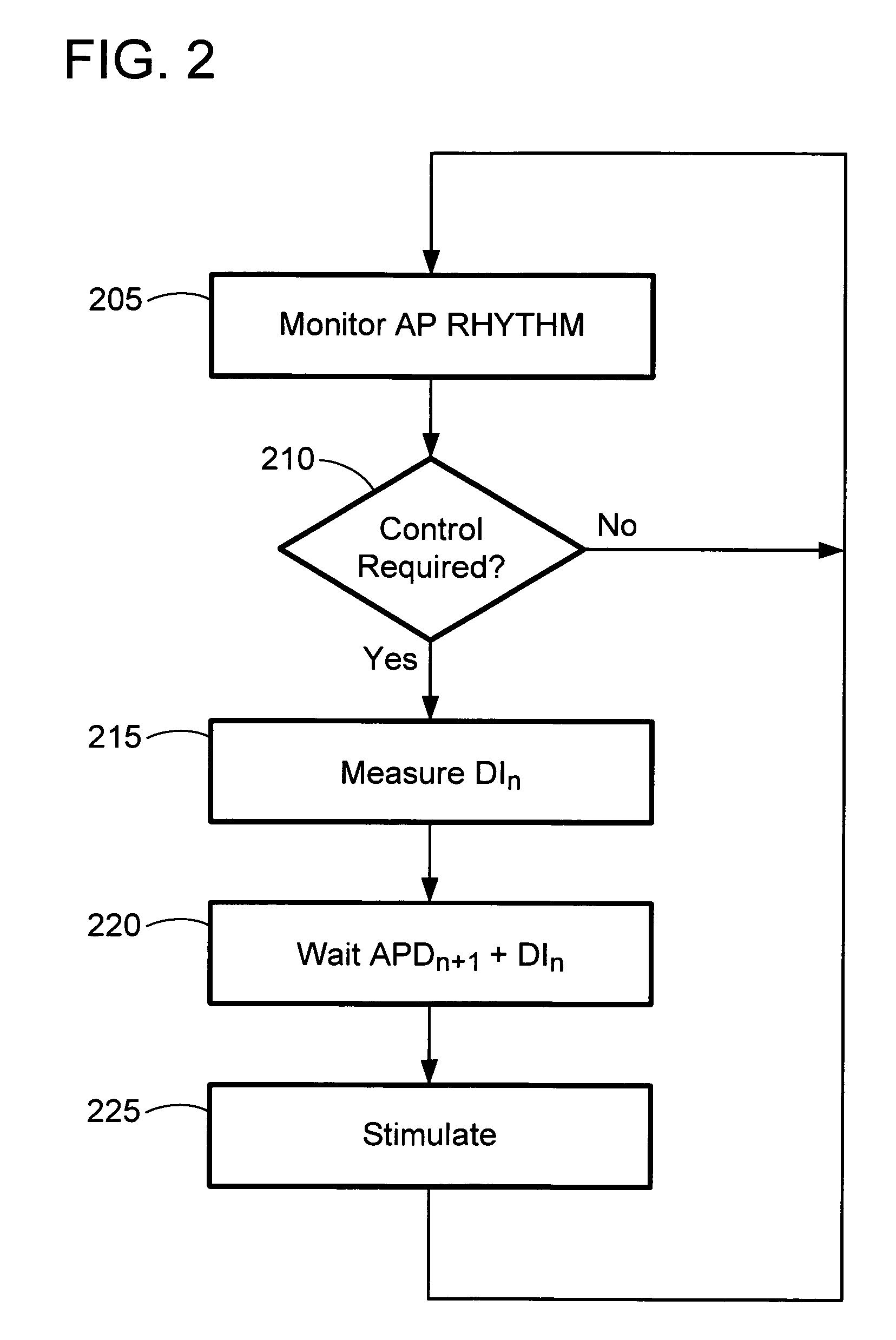Adaptive diastolic interval control of action potential duration alternans
a diastolic interval and alternan technology, applied in the field of real-time detection techniques and real-time, model-dependent control techniques for detecting and stabilizing pathological physiological rhythms, can solve the problems of affecting the stability of the patient, and causing the patient to suffer
- Summary
- Abstract
- Description
- Claims
- Application Information
AI Technical Summary
Benefits of technology
Problems solved by technology
Method used
Image
Examples
Embodiment Construction
[0035] The present invention provides a real-time detection technique and a real-time, adaptive, model-independent control technique for detecting and stabilizing pathological physiological rhythms, such as repolarization alternans, on the basis of the rate dependence of excitable tissue such as cardiac and neuronal tissue. In the description that follows, the invention shall be described using cardiac tissue. Those skilled in the art will recognize that the present invention may be used with other types of excitable tissue. The rate dependence of cardiac tissue is typically expressed through the restitution relation, the unique relationship existing between the nth diastolic interval (DIn) and the n+1th action potential duration (APDn+1), where n is the beat number. FIG. 1a shows an exemplary restitution curve. Expressed mathematically, this relationship is APDn+1=f(DIn), where f is an experimentally determined function. While the control method of the present invention does not re...
PUM
 Login to View More
Login to View More Abstract
Description
Claims
Application Information
 Login to View More
Login to View More - R&D
- Intellectual Property
- Life Sciences
- Materials
- Tech Scout
- Unparalleled Data Quality
- Higher Quality Content
- 60% Fewer Hallucinations
Browse by: Latest US Patents, China's latest patents, Technical Efficacy Thesaurus, Application Domain, Technology Topic, Popular Technical Reports.
© 2025 PatSnap. All rights reserved.Legal|Privacy policy|Modern Slavery Act Transparency Statement|Sitemap|About US| Contact US: help@patsnap.com



